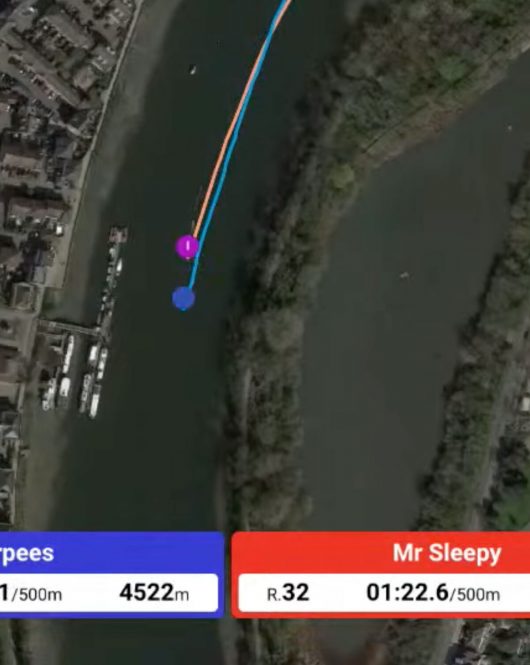Times have changed… Now anyone who works with athletes needs to be a Sports Performance Analyst…
Dr Mark Homer looks at how coaches, teams and individuals should now react to and handle big data sets to drive improvements in performance.
Are we all Sports Performance Analysts?
Until fairly recently, Physiologists had heart rate monitors, S&C coaches had weights bars and Physiotherapists had their hands. Most analysis was done with a home-made Excel spreadsheet that nobody but their creator could understand, let alone use. With a few notable exceptions, ‘crunching numbers’ was reserved for those with Analyst in their job title.
However, times have changed, and the explosion in tech that allows for the automated collection of information on a grand scale has altered the skill-set required for all practitioners. With this in mind, this article will explore the process that individuals or teams should go through when faced with the prospect of large quantities of data. Anyone who works with athletes now needs to be a sports performance analyst, and few of us have had training in the art of collection, management, interpretation and feedback of data.
Firstly, some history. What can we learn from those disciplines that are used to handling ‘big data’ and are comfortable in the position that other practitioners now find themselves in. Performance analysis in sport has evolved from watching videos of past games/races to be a crucial component of the coaching feedback process and tactical analysis of competition. Performance analysts have always been comfortable with tech and data, and this is particularly evident in some sports.
Performance Analysis in the NFL
A sport that lends itself well to the use of performance analysis is American Football. Simple game statistics are used to assess player performance such as tackles, sacks, catches and rushing yards, and have a large impact on selection via the college draft system. As technology has evolved, coaches and players are now able to make use of pitch side analysis of ‘plays’ both on offensive and defensive sides of the ball. An extensive indexed library of players and teams are at the fingertips of coaches, and a team of analysts who can communicate directly with the players during the game. This allows coaches to play out a tactical game of chess with a board full of 120kg athletes all playing very specific roles, not appreciated by those unfamiliar with the game.
However, the influence of performance analysis has not always been positive. Even in the early days of notational analysis in football and the counting of passes, throw-ins and sprints etc, ‘pioneers’ such as Charles Reep, made substantial errors in the interpretation of data based on personal bias that arguably hindered the progress of English football during the 20th century.
Biomechanics in Rowing
Biomechanics is the analysis of movement patterns and force production in order to provide quantitative information that can inform the coaching and feedback process in a way that simple observation cannot. The interaction of athlete with boat/oar and water has long been synonymous with the sport, and used from the highest level to school crews. By using force and angle sensors located on the oar gate, biomechanists can provide information on length of each stroke and the force-time/force-angle relationships of its duration. This allows for coaches to explore the ‘windows of opportunity’ to improve crew speed.
Again, the use of this technology has not led to domination of the sport by those that use it. This likely stems from attempts to force athletes to row a certain way, based on the concept of ‘rowing by numbers’ – at the expense of blending crew members and utilising their various strengths to form the fastest boats.
New Wave Sports Performance Analysts
Recent developments in data capture and analysis have made all the practitioners in a multi-disciplinary support team data analyst of some kind. For many, this has been thrust upon them. Accurately collecting large quantities of information, interpreting it correctly and communicating it to coaches and athletes requires a certain skill set for effective use. So, what are the key components of performance analysis and observation analysis in sport that should be considered and how?
Data Collection/Management in Sports Performance Analysis
It is vital that practitioners have a performance question in mind when they begin a data collection journey. What is the challenge being faced that requires a solution? This should be agreed by all the stakeholders involved in the process – including the athletes. Without ‘buy-in’ from all parties there will be problems with accuracy of and adherence to data collection. It is also worth setting a time frame at this point – any new metrics should be ‘piloted’ and their impact assessed before long term data collection commences.
There are many factors to consider when collecting any kind of data:
- It is vital that information is reliable, accurate and valid – terms that are often used interchangeably but have distinct meanings.
- The reliability of data relates to its consistency – if we re-tested a variable immediately, would we get the same score? Accuracy refers to how close to an actual value a score or reading is. Data can be reliably accurate or reliably inaccurate (and often is!).
- Finally, validity is the appropriateness of a measurement and how closely it relates to the information that is required to answer a performance question.
Data management should not be forgotten and although not glamorous, it is vital to ensure stored information adheres to data protection regulations. Good practice in this area also makes analysis easier both in the short and long-term.
Data Interpretation
The crux of data interpretation is objectivity. We are all influenced by bias or opinion that can either consciously or unconsciously impact how we interpret data. I have witnessed practitioners attempting to identify patterns within noise that fit a particular narrative and support their view of performance. Therefore, the choices we make when statistically analysing information and visualising results are crucial.
Feedback
Feedback is a component of data intelligence that does not necessarily require specialist training to get right. In fact, ‘data analysts’ are often accused of not being able to translate the information they have collected into a format that coaches and athletes can understand – limiting the usefulness of their numbers. Without being stereotypical and pigeon-holing practitioners to certain personality types, sometimes the more relationship driven approaches of some disciplines lend themselves well to being the conduit between data and practice. Communication skills that are vital for physiologists, S&C coaches and physiotherapists (to name but a few) can be put to good use if the collection and interpretation of data has been done well.
Summary
So, when an opportunity to provide some detailed analysis using the latest piece of tech arises, first of all – don’t panic. There may be an overwhelming sense by the speed at which the pile of numbers grows. Consider these key principles of data intelligence, always refer back to your performance question and remember – “not everything that can be counted counts, and not everything that counts can be counted (Albert Einstein).
Do you agree that we are all Sports Performance Analysts? Find out about the tools Ludum has to help Sports Performance Analysts, Coaches and Athletes, at all levels.
View more content like this

Ludum live streams The Boat Race Trial Eights 2022
It’s no secret that Ludum was born from the rowing community, we were originally called Rowe.rs after all! But despite the fact that we now
Why use Biomechanics?
Dr. Conny Draper is the world leading expert on Biomechanics in Rowing. Here she concentrates on the three main areas of focus within the rowing
How To Be a Better Coxswain
The cox’s number one job is to keep their crew safe! Alongside the steering and safety, my job is to make calls that direct the




